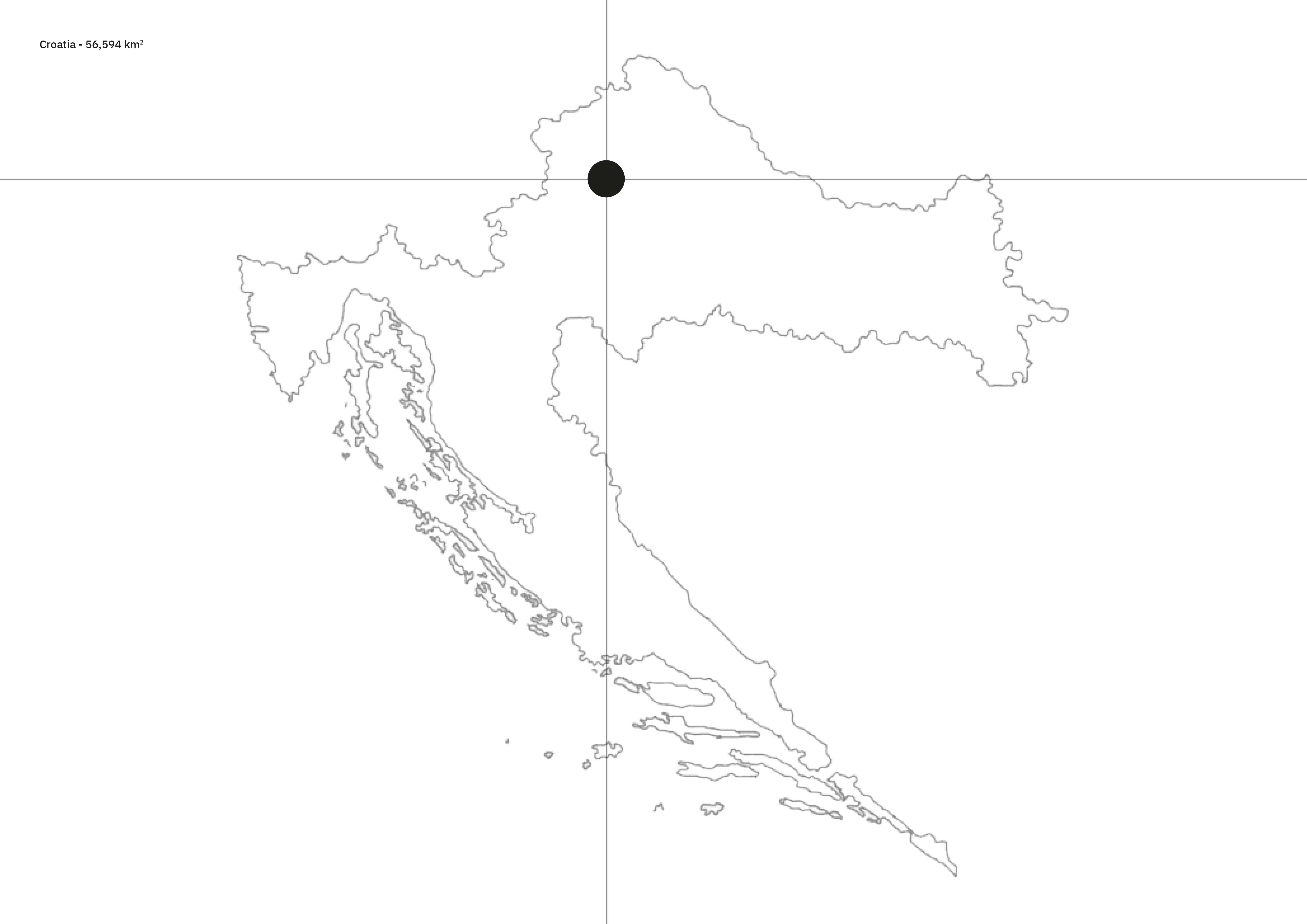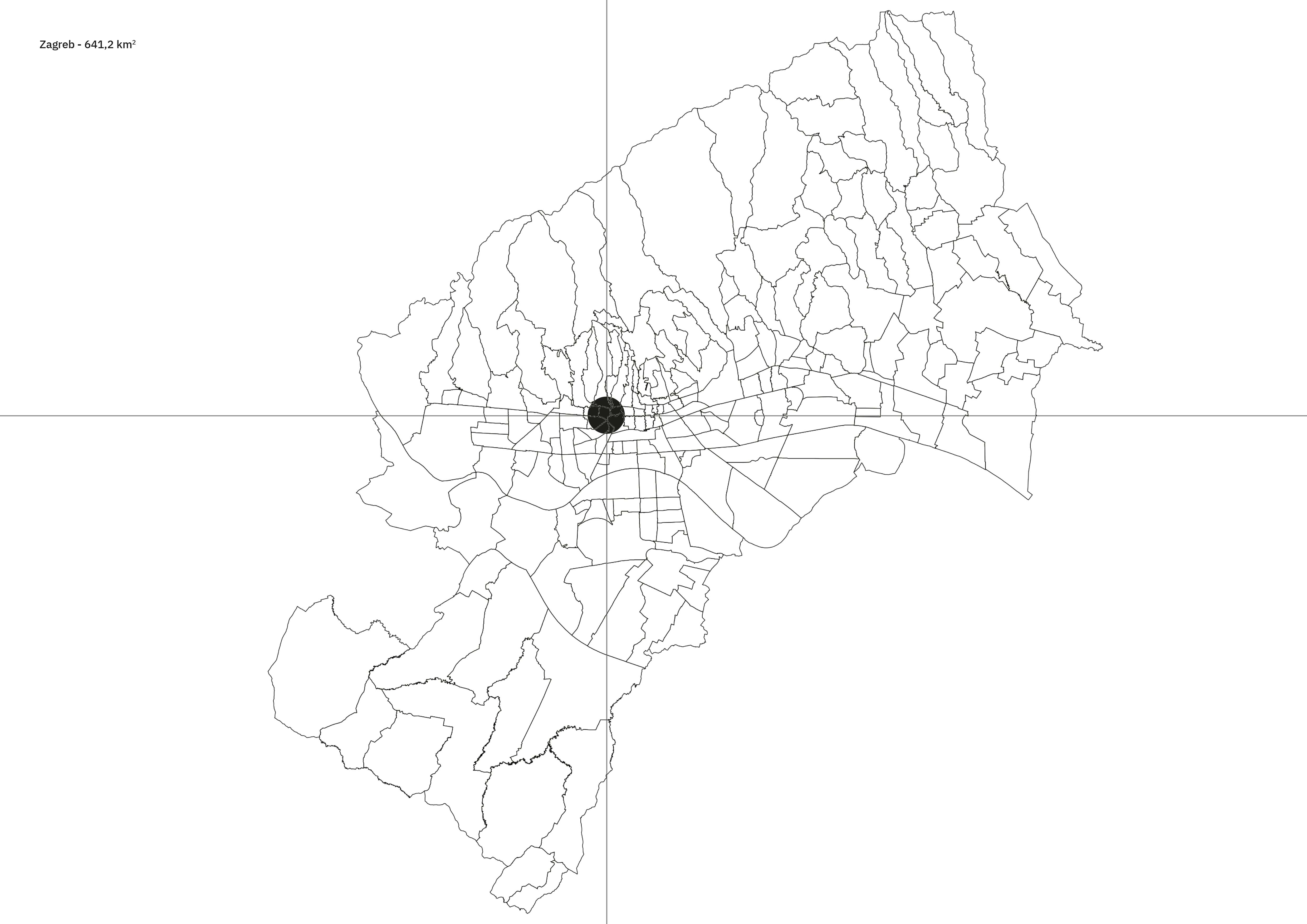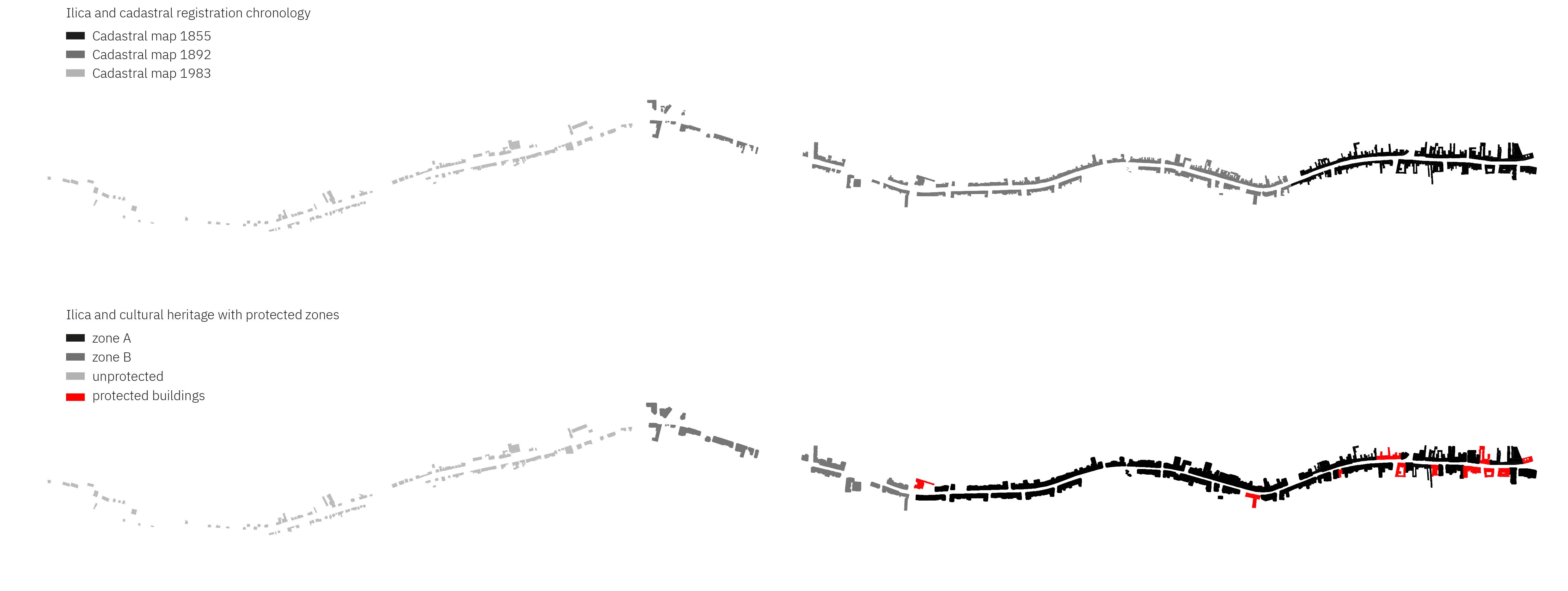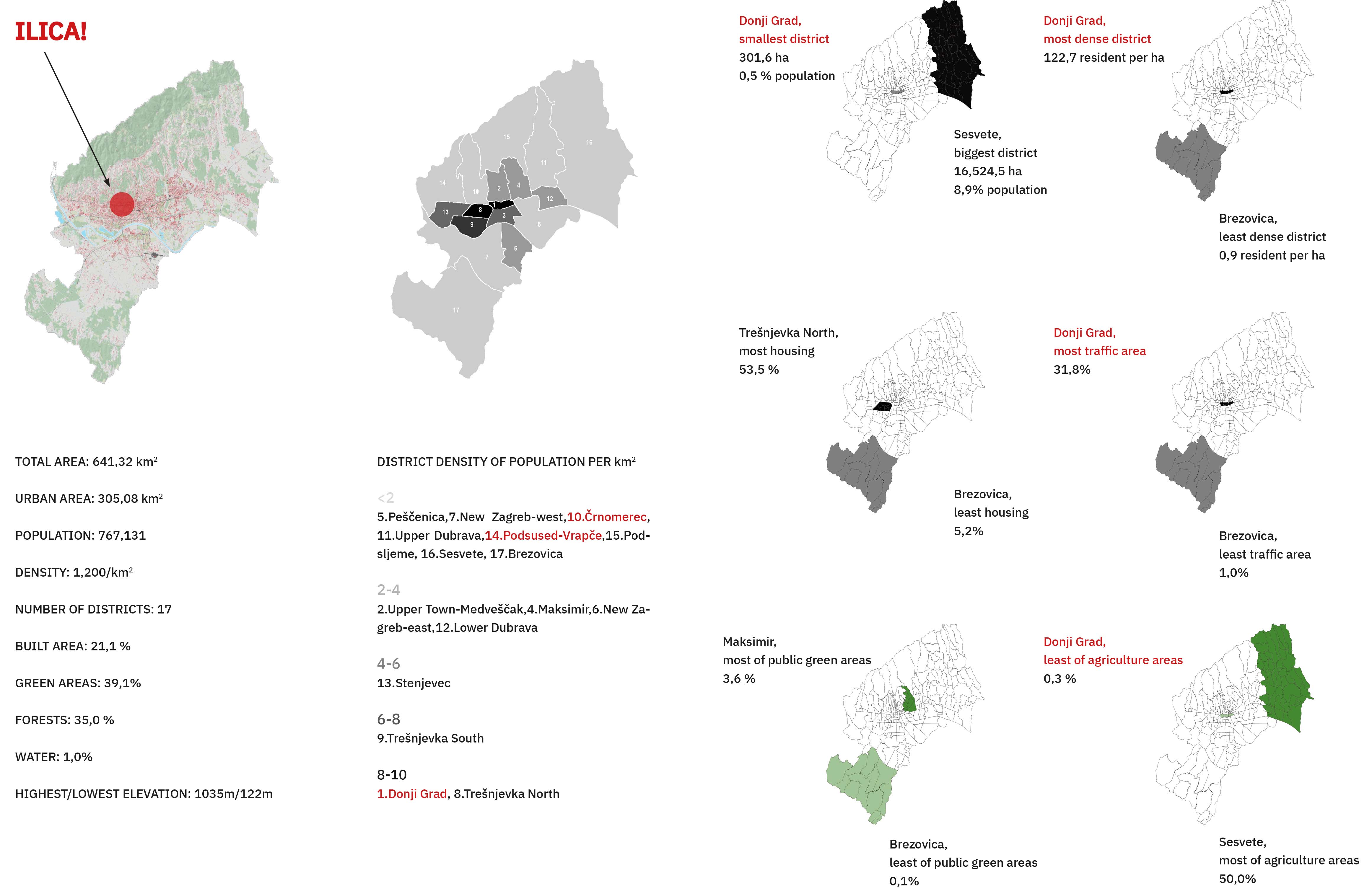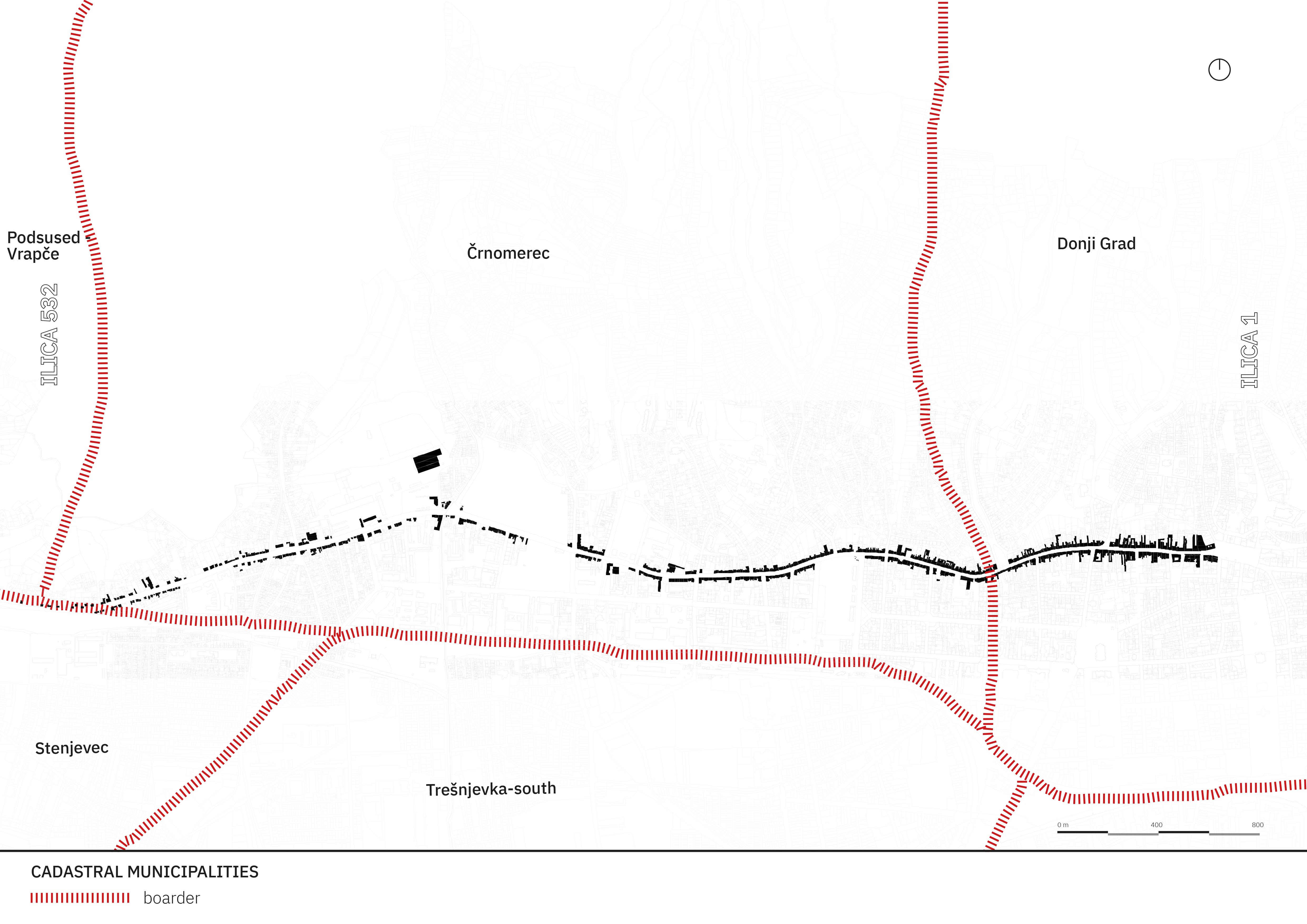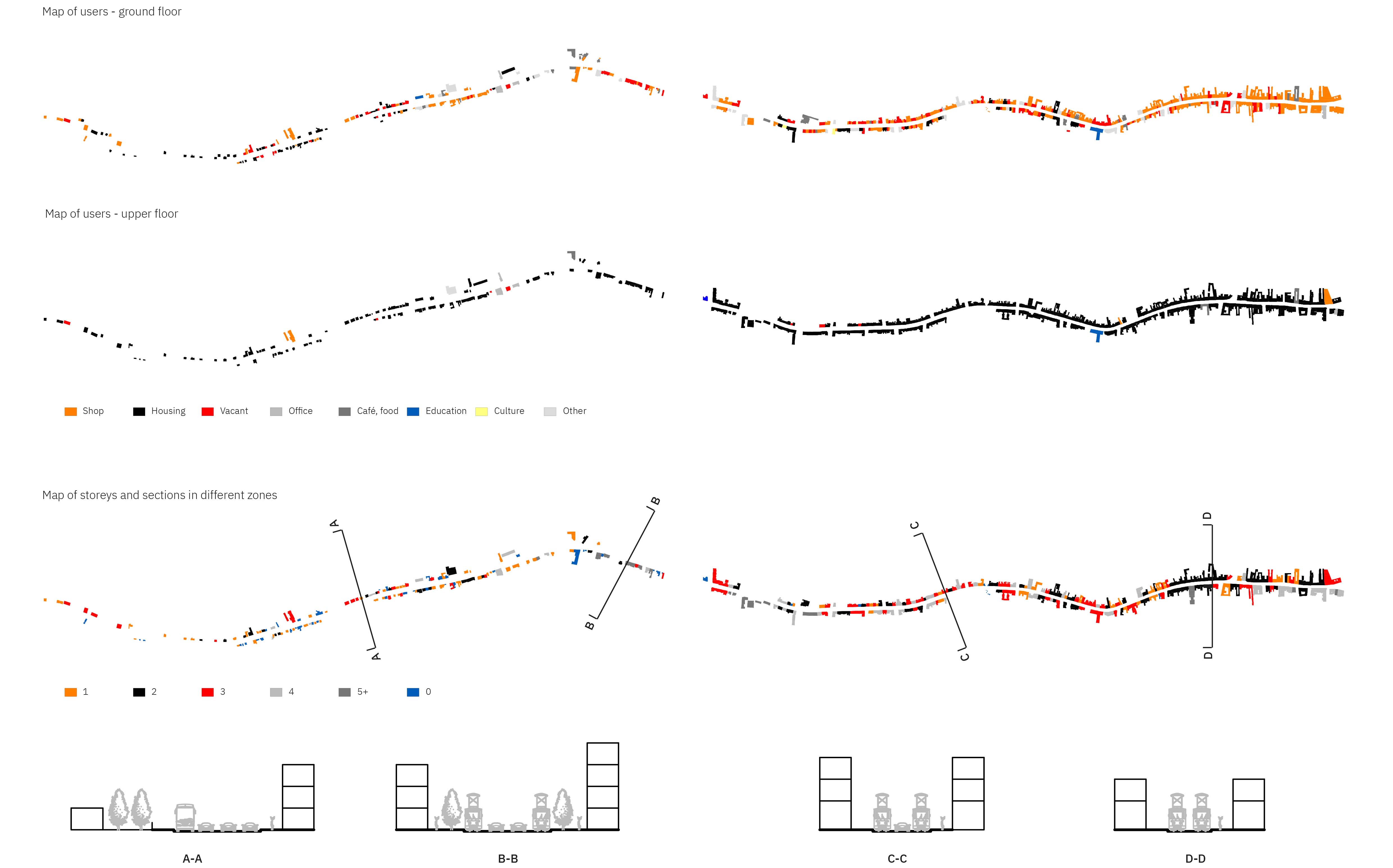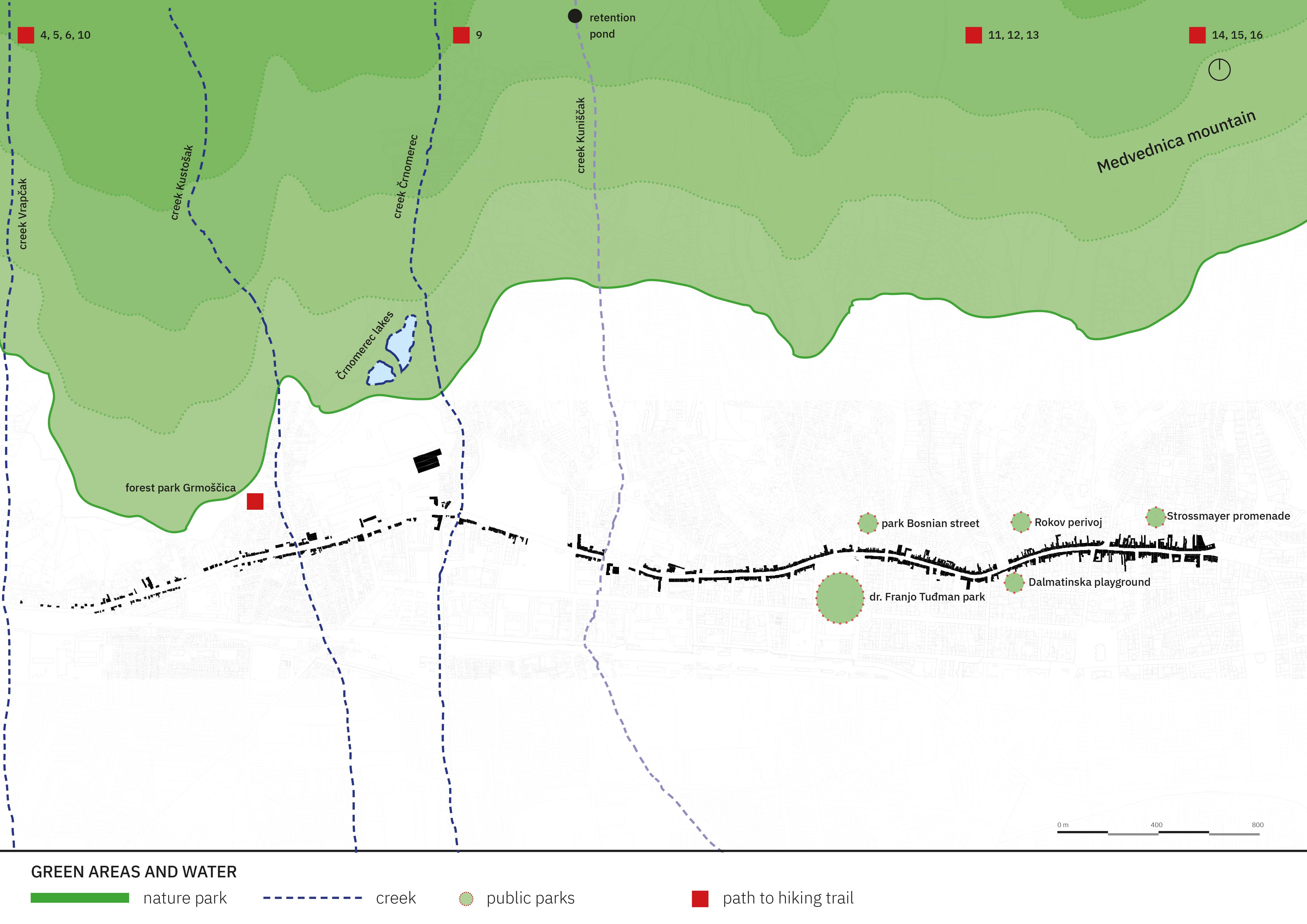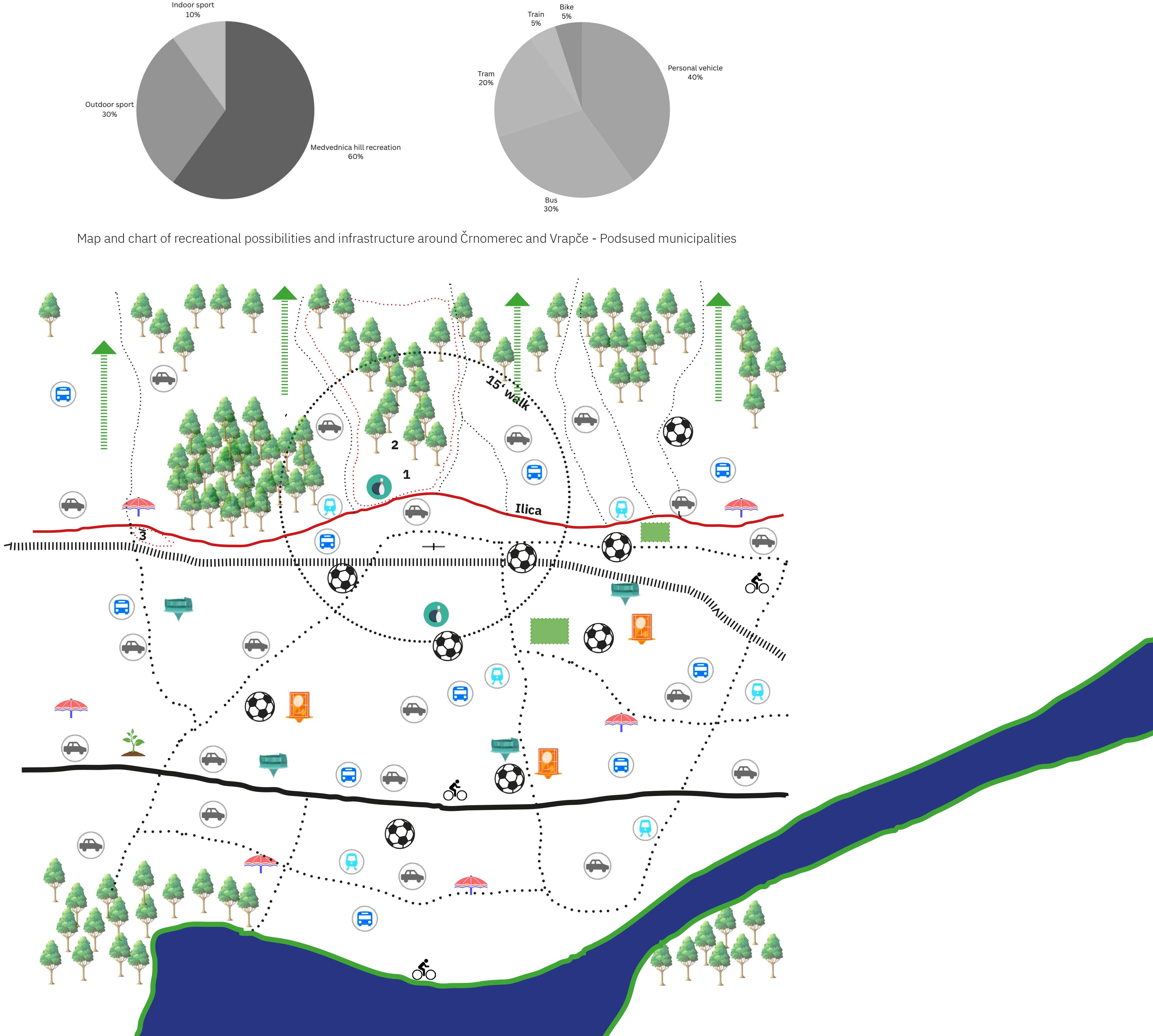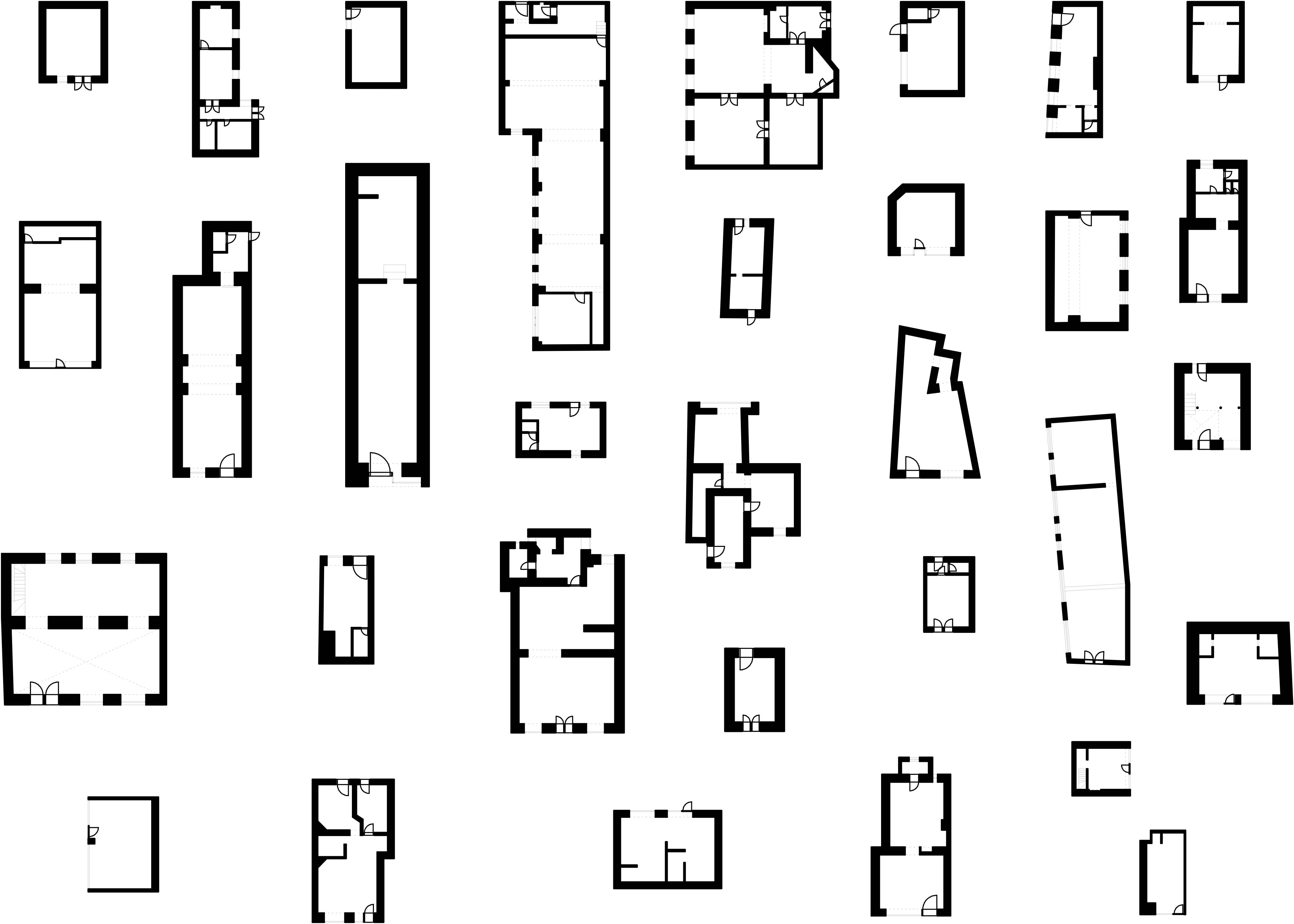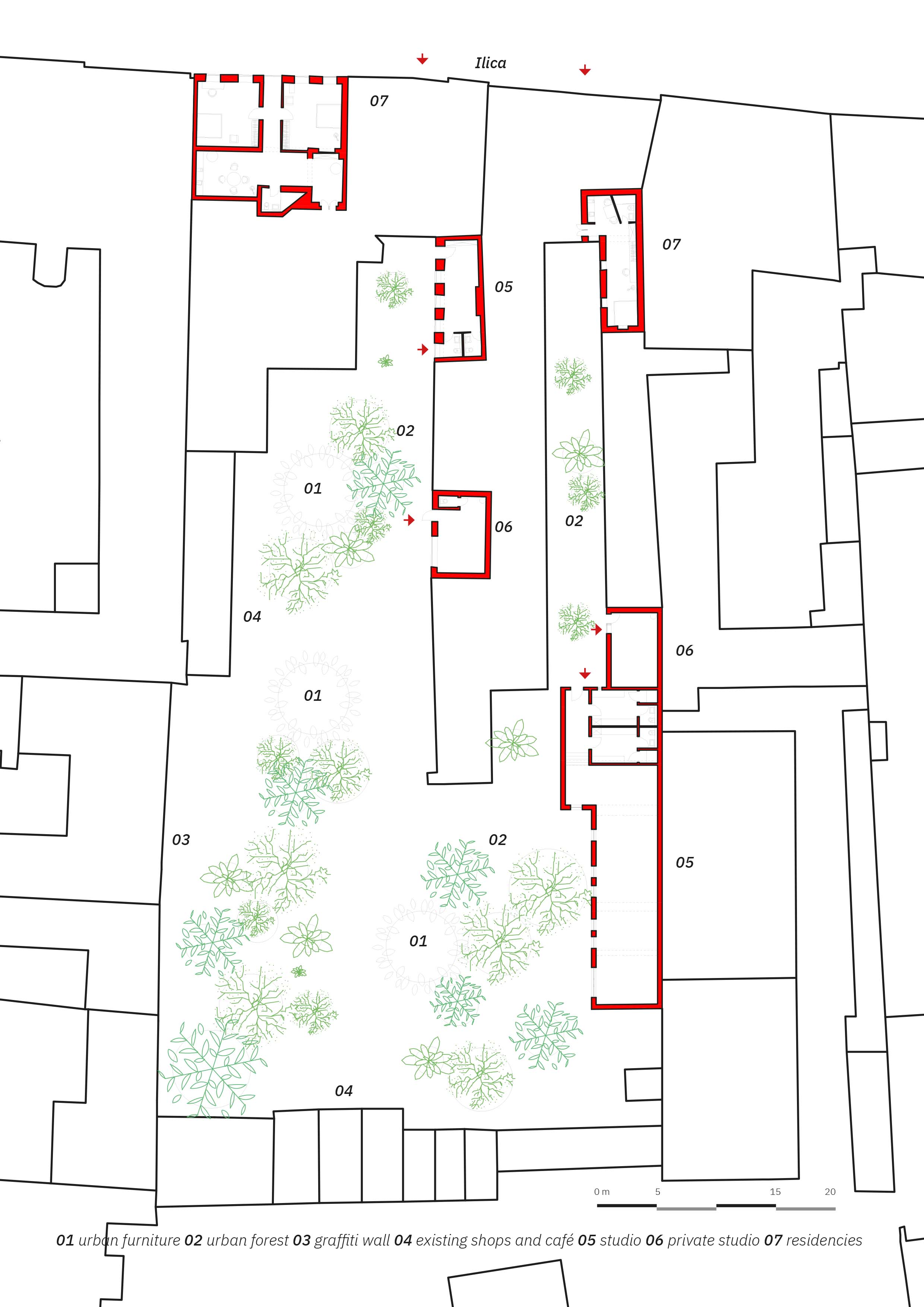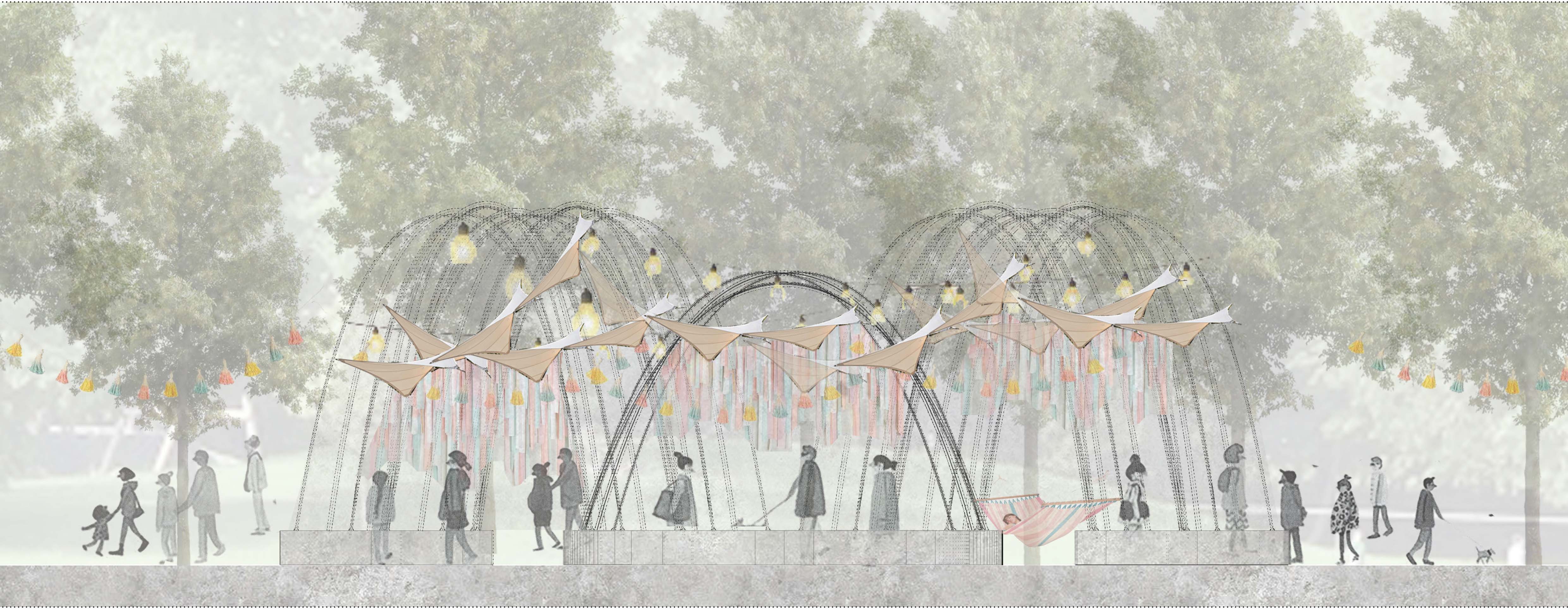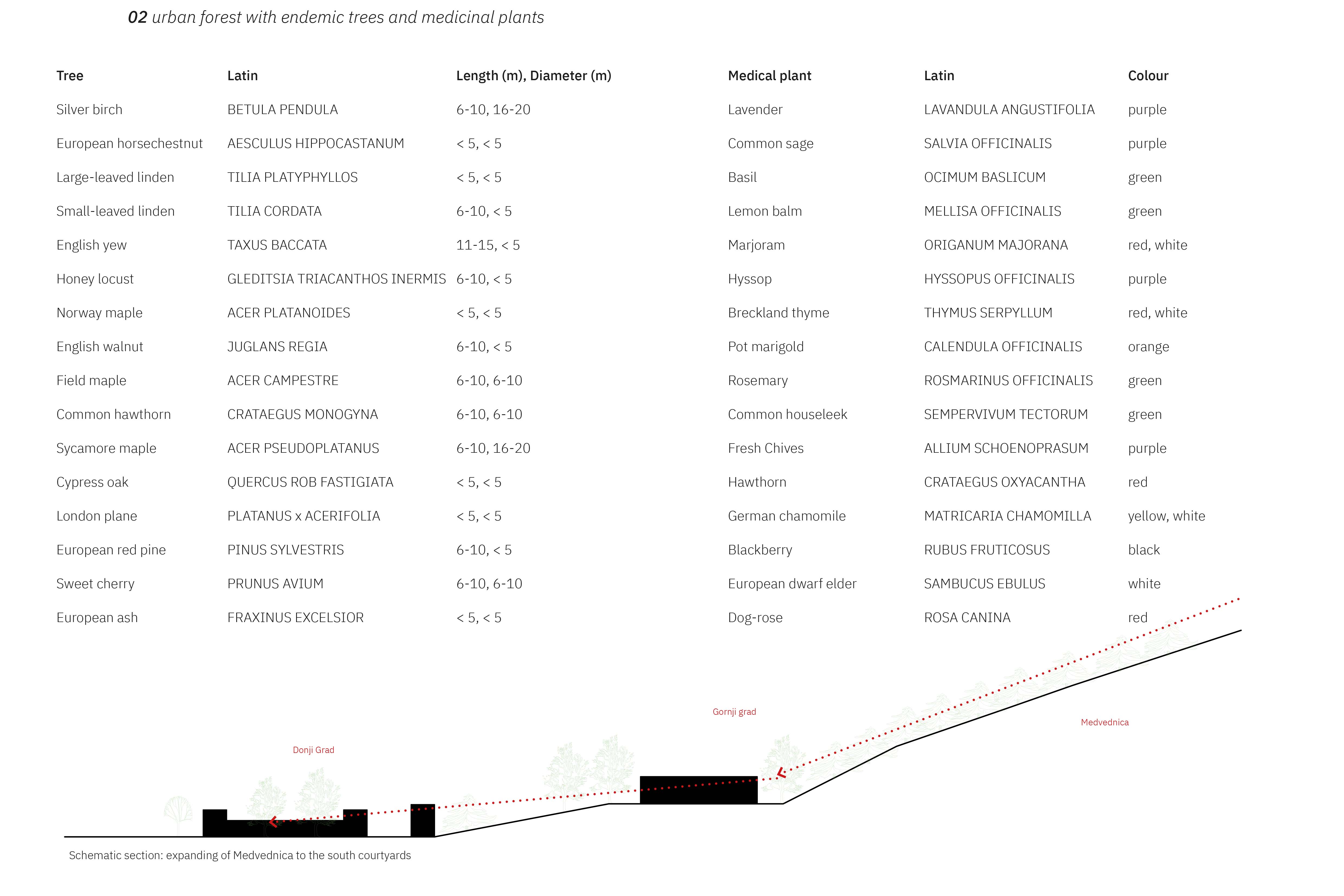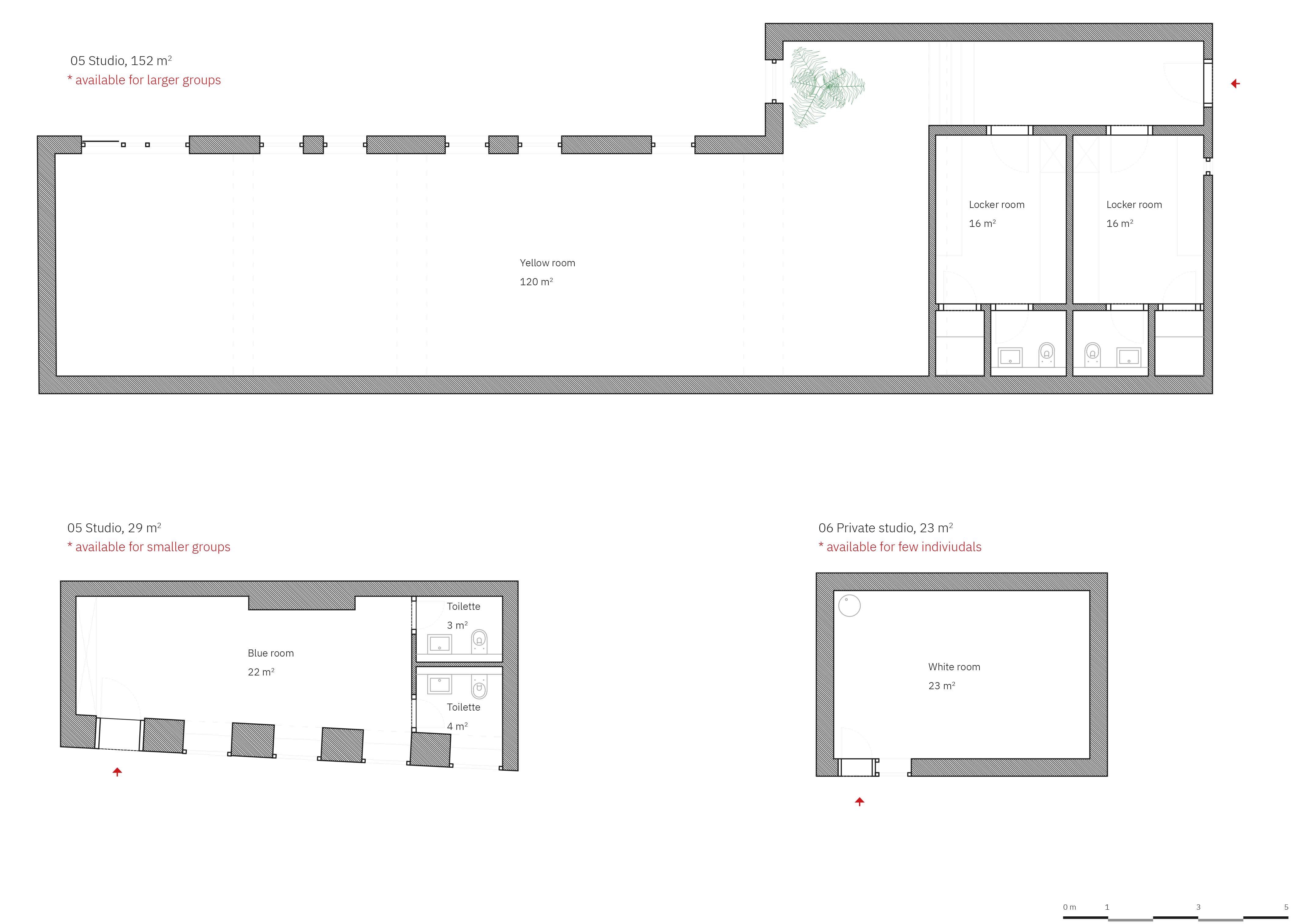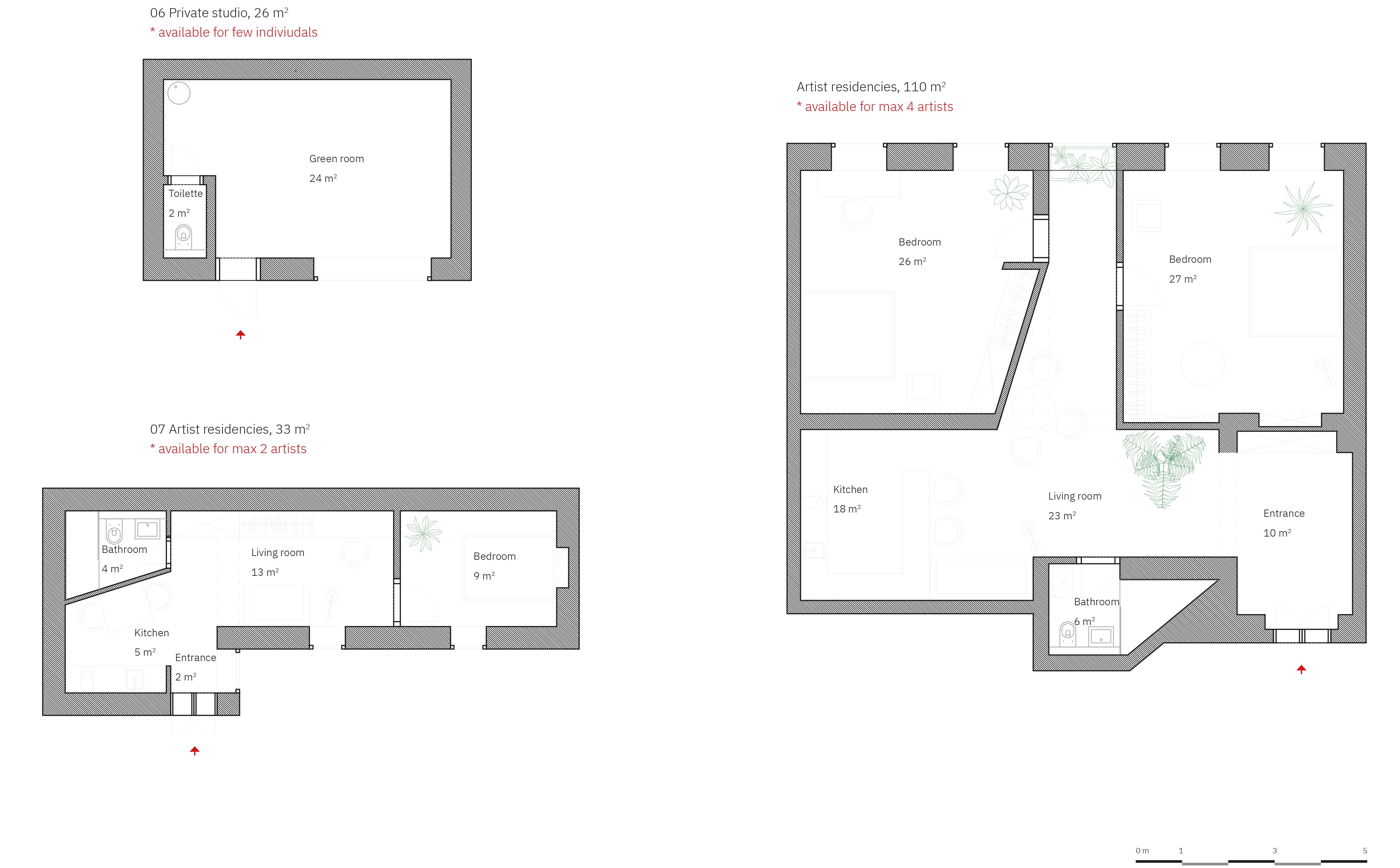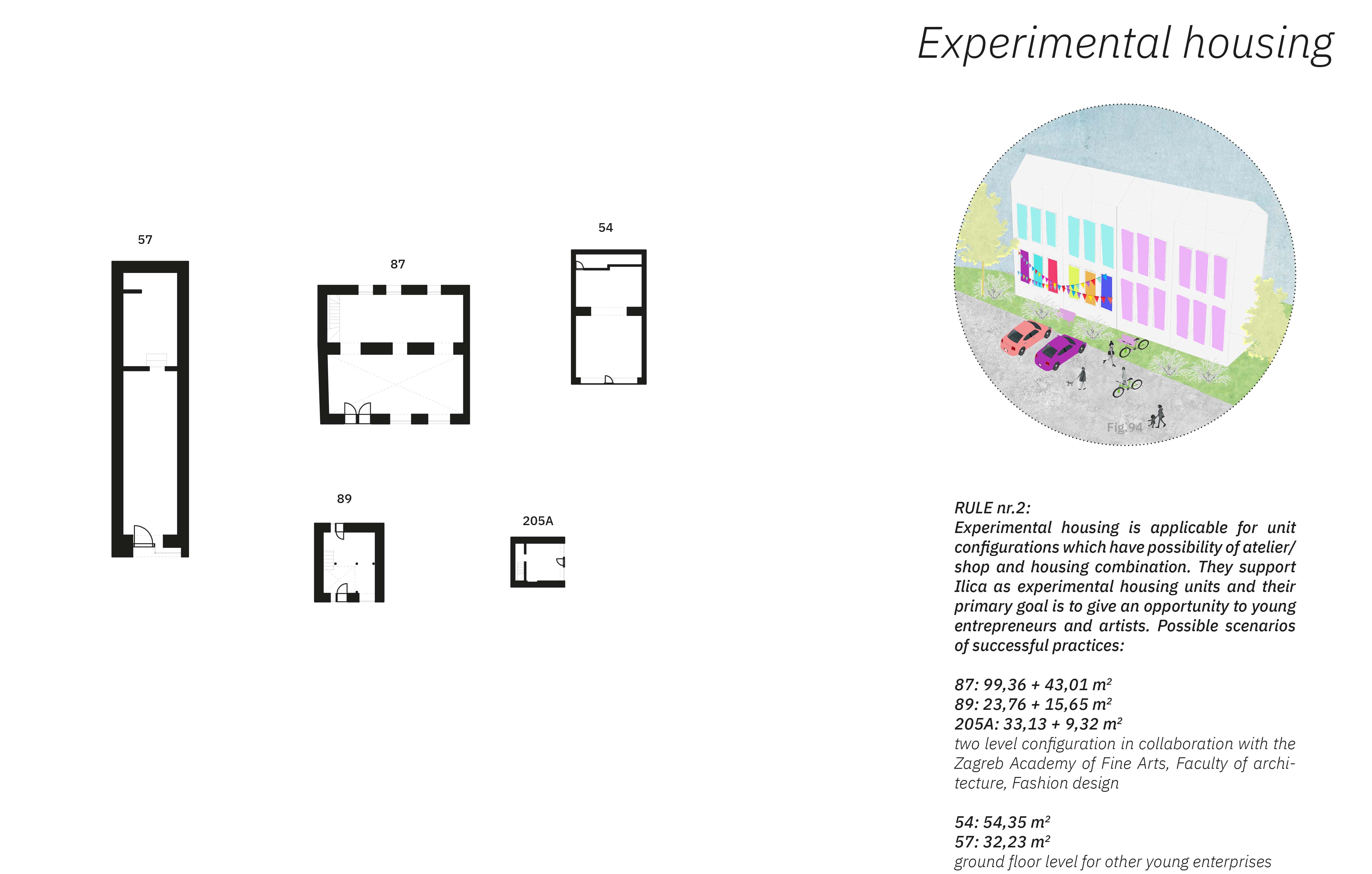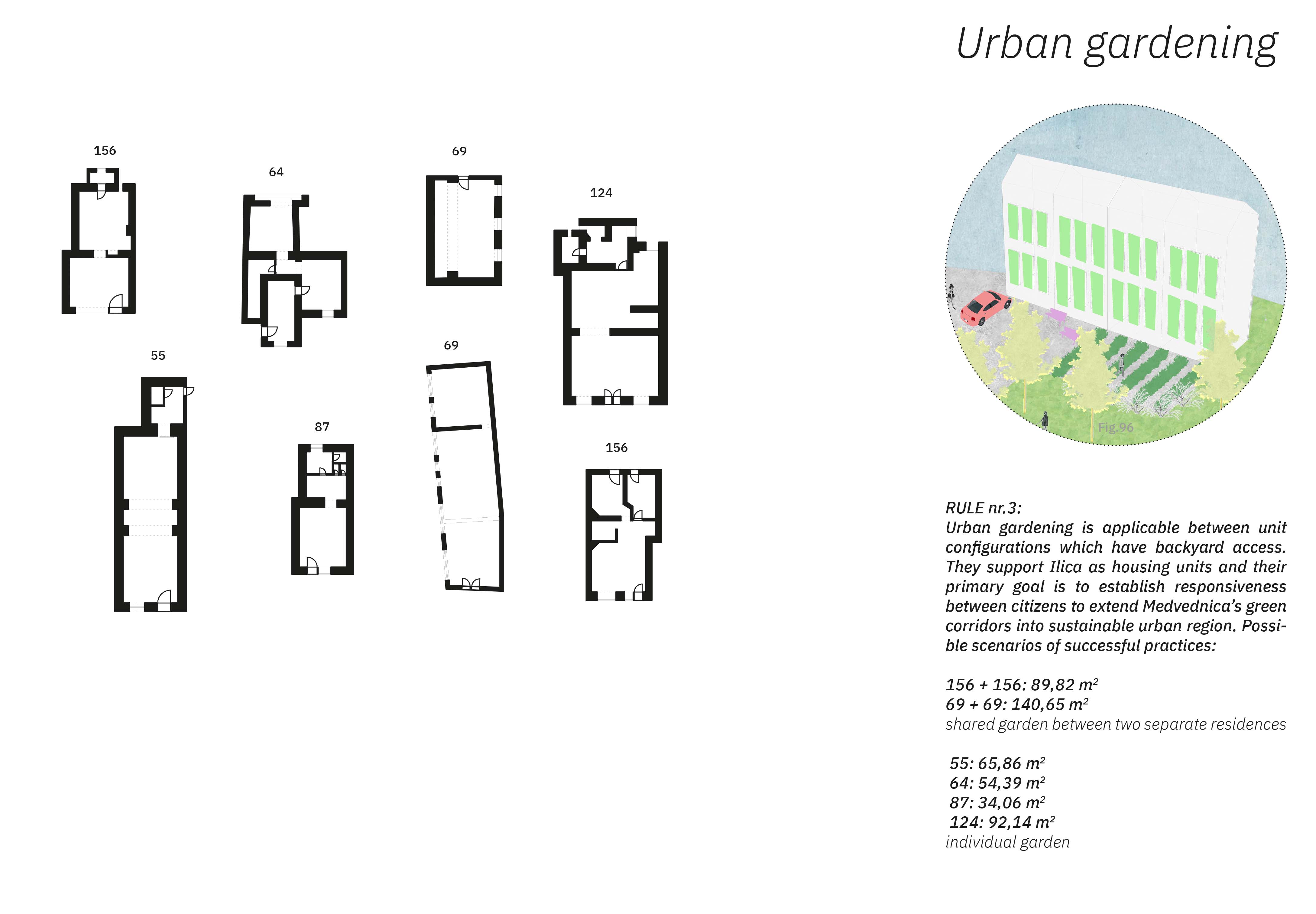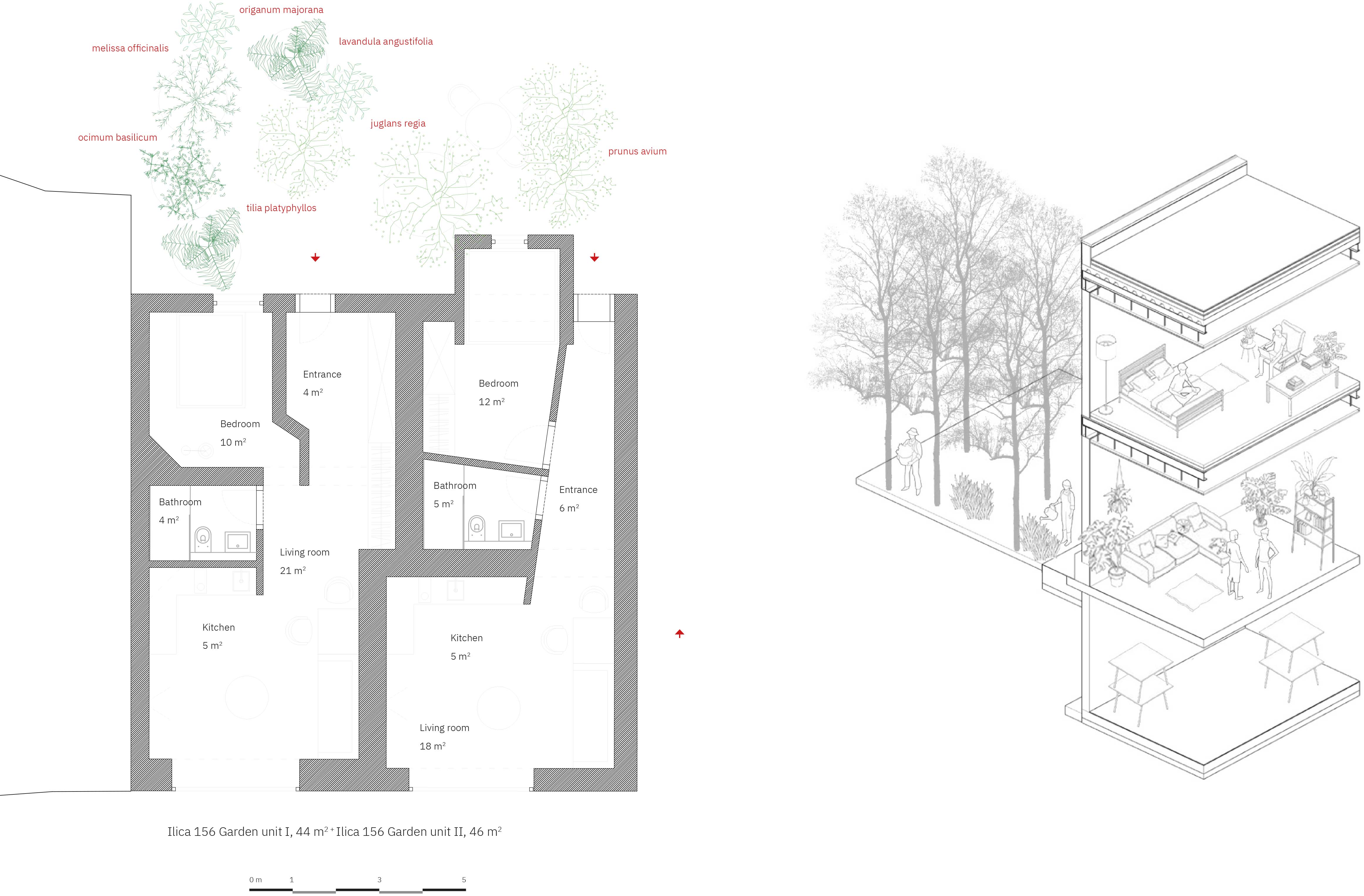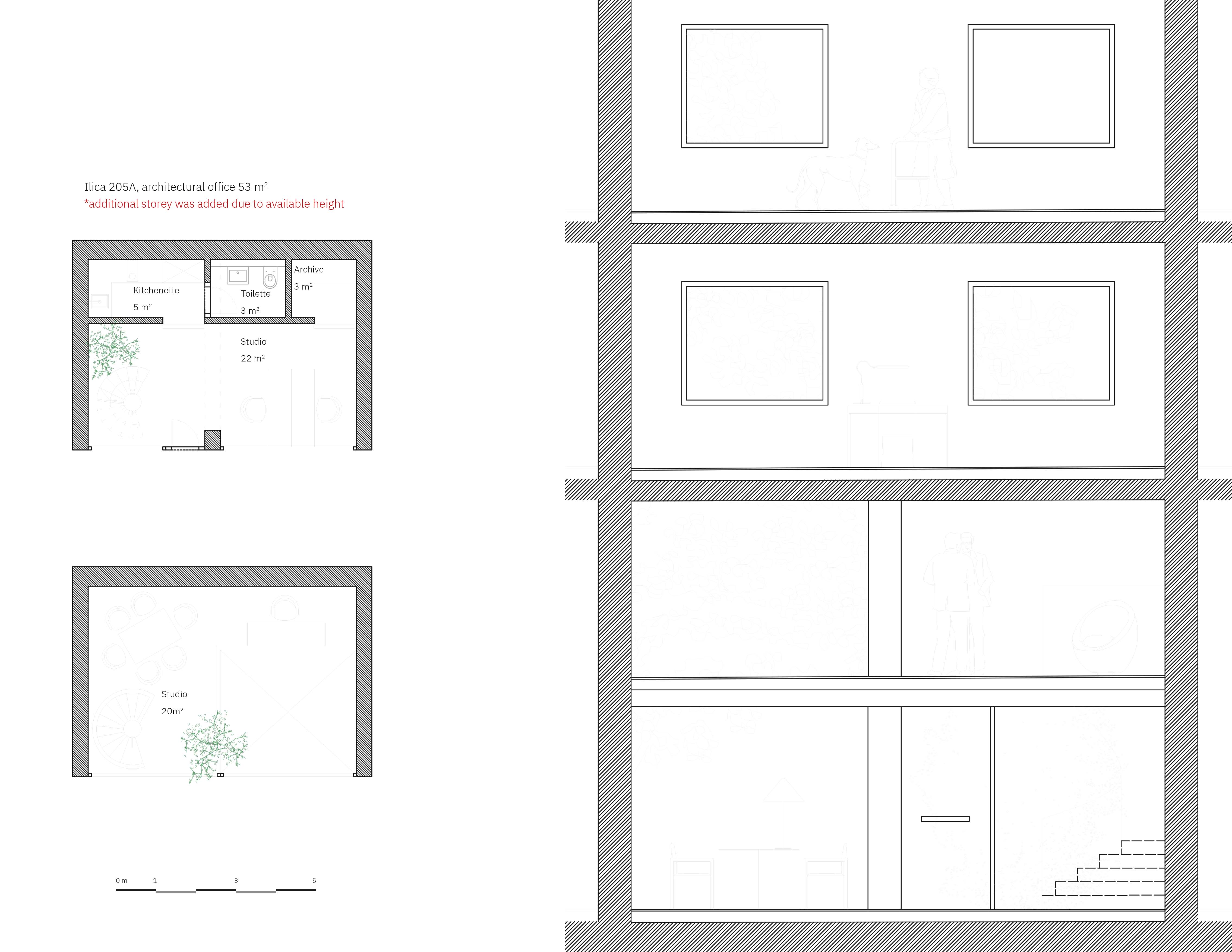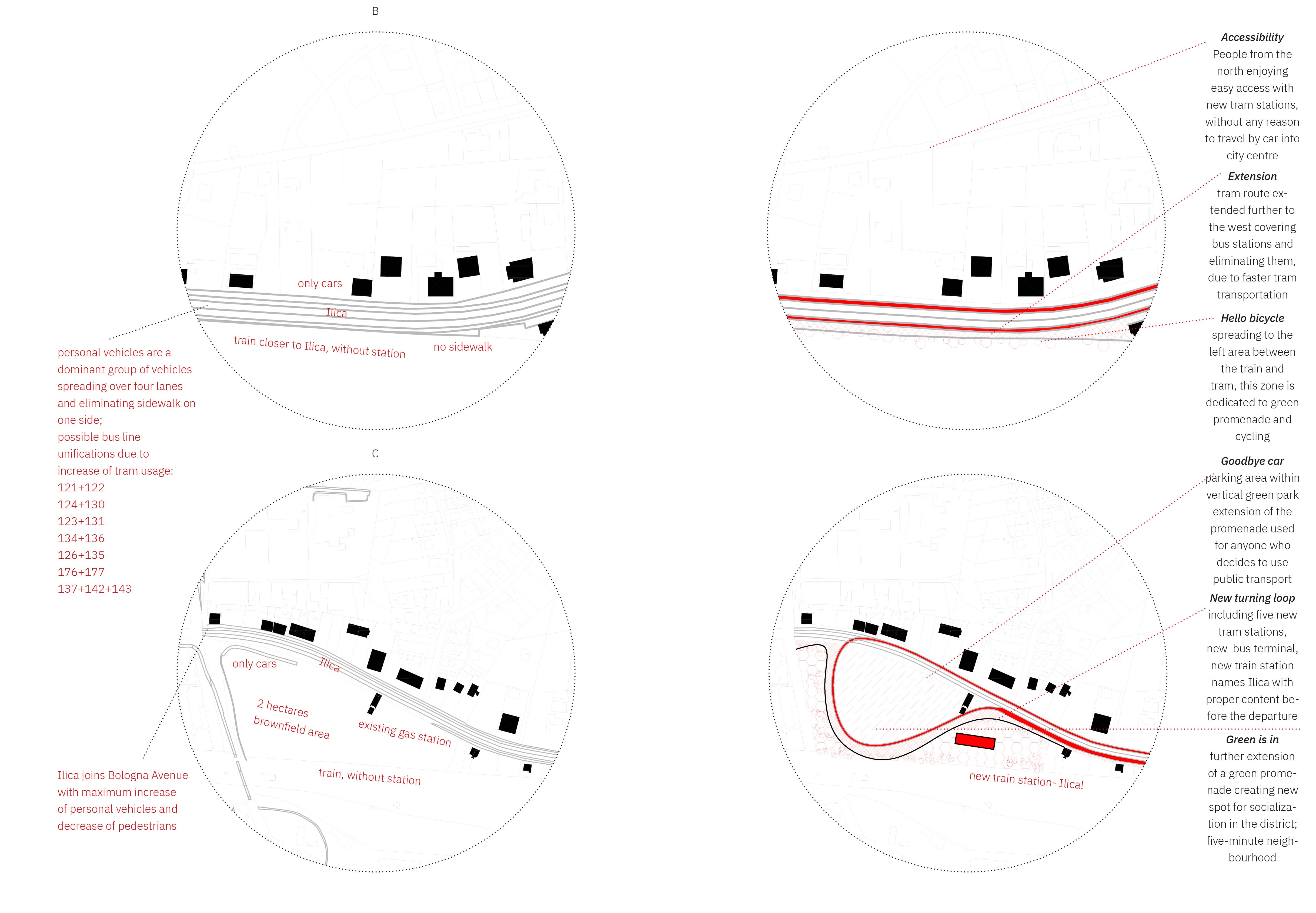With a length of 5.7 kilometers, Ilica is Zagreb’s third longest street. It is a street full of stories and historical influences that are reshaping the form and exchanges between several stages of a very dynamic life. Despite being the primary cause of morning traffic jams, Illica serves as the main connector between the western and eastern parts of the city. The city blocks closer to the city center are in better shape, and at ground floor level they brim with life, contributing to a buzzy street atmosphere. The situation changes rapidly after one kilometer, many ground floors are vacant, and there is a changing typology of unused spaces that are aesthetically pleasing but act strangely. There is no space for bikes, sidewalks are narrower, and cars replace trams in areas that could be reserved for other users. This project aims to go more deeply into the street’s history and morphology as well as the street level environment. What is Ilica telling us? How did things come to be the way they are? Since each zone requires a different approach, the primary focus is on the different sequences and elements of Ilica. While in one zone we deal with the problem of undefined urban voids that appear like urban mutants, in another we look at vacancies that have potential as social spaces and a street-level environment for healthy activities, something that is lacking at present. Following the collection and analysis of data, the project concentrates on establishing a proper connection across various scales.Alle hier hochgeladenen Inhalte sind das eigene Werk der Absolventin oder des Absolventen.



